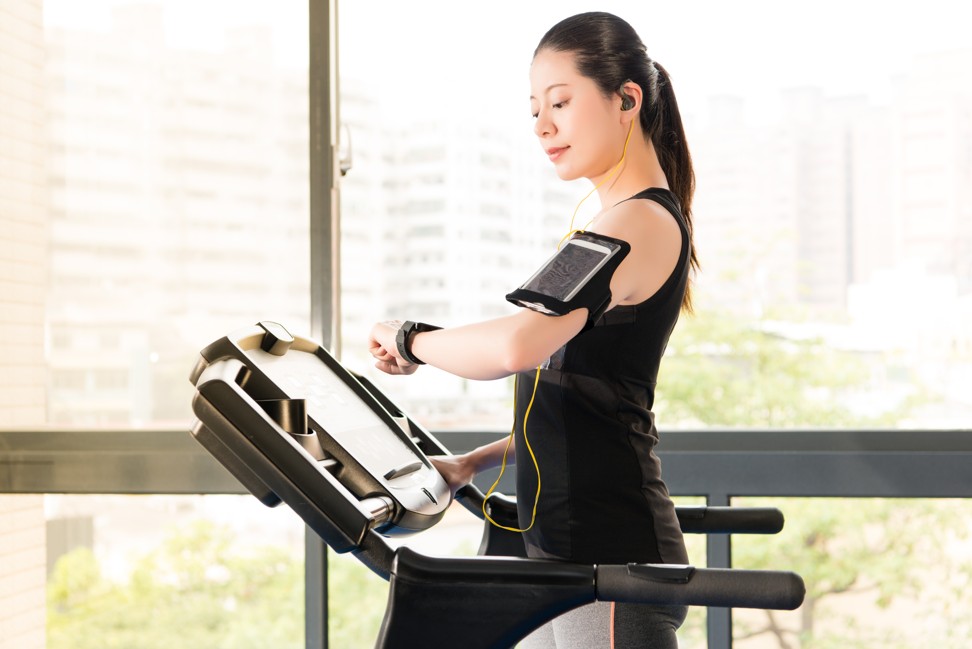
Why Elton John is your ideal workout partner: fast tempo music is best for your indoor exercise
- Fast music is good for your high and low intensity exercise, reducing perceived effort and increasing the heart rate
- Other research shows that high tempo music increases people’s enjoyment of their workout
And a first-of-its-kind study has just revealed that high tempo music may make this exercise easier and more beneficial.

Many people listen to music while exercising and previous studies have found that music can distract from fatigue and discomfort while increasing participation in exercise. But until now, researchers did not understand what kind of music was best suited to different types of exercise.
The study, published in Frontiers in Psychology, measured the effect of the tempo of a piece of music on 19 women aged 24 to 31 while they were walking on a treadmill or using a leg press. The volunteers completed exercise sessions in silence, or while listening to pop music at different tempos.
The music varied between low tempo (90 to 110 beats per minute, or bpm), medium tempo (130bpm to 150bpm) and high tempo (170bpm to 190bpm). The researchers recorded the participants’ heart rates and opinions on their perceived effort to complete the exercise.
We found that listening to high-tempo music while exercising resulted in the highest heart rate and lowest perceived exertion compared with not listening to music
“We found that listening to high-tempo music while exercising resulted in the highest heart rate and lowest perceived exertion compared with not listening to music,” said Professor Luca Ardigò of the University of Verona in Italy. “This means that the exercise seemed like less effort, but it was more beneficial in terms of enhancing physical fitness.”
The effects were more striking in volunteers completing the walking endurance exercise, compared with those performing high-intensity weightlifting.
The researchers concluded that people performing endurance activities such as walking or running may receive the greatest benefit from listening to high-tempo music rather than those undertaking short-burst explosive exercises.
They believe that the difference could stem from the extra cognitive fatigue associated with endurance exercise. As anaerobic high-intensity exercise is shorter in duration and requires fewer decision-making processes, music is less influential on a person’s perception of effort.

The researchers now hope to expand their study to examine other variations in music. “In the future we would also like to study the effects of other music features such as genre, melody, or lyrics, on endurance and high-intensity exercise”, said Ardigò.
Previous research has shown that music motivates people to exercise longer or harder and can help runners or cyclists go further when synchronised with their pace.
And listening to music during a workout can make exercise much more enjoyable according to researchers from Brunel University London, who monitored the brain’s response to music while people exercised.

Their results, published in Psychology of Sport and Exercise, found that listening to music led to a 28 per cent increase in enjoyment in physical activity, compared with no auditory stimuli. Enjoyment was also 13 per cent higher for those who listened to music, compared with those who listened to a podcast.
So if you’ve got extra time, like the time you would normally commute to and from work, consider putting on some high tempo music and get moving.
High-tempo hits
To compile your own playlist of high-tempo music to power you through your workout with ease, try the songbpm.com website. Plug in the artist and title of a song, and find out its bpm score. Anything above 170bpm should help keep you moving.
Here are three high-energy pieces you might want to try:
Elton John, I’m Still Standing, 177bpm
Thousand Foot Krutch, Bring Me to Life, 175bpm
Tom Petty, Runnin’ Down a Dream, 170bpm

